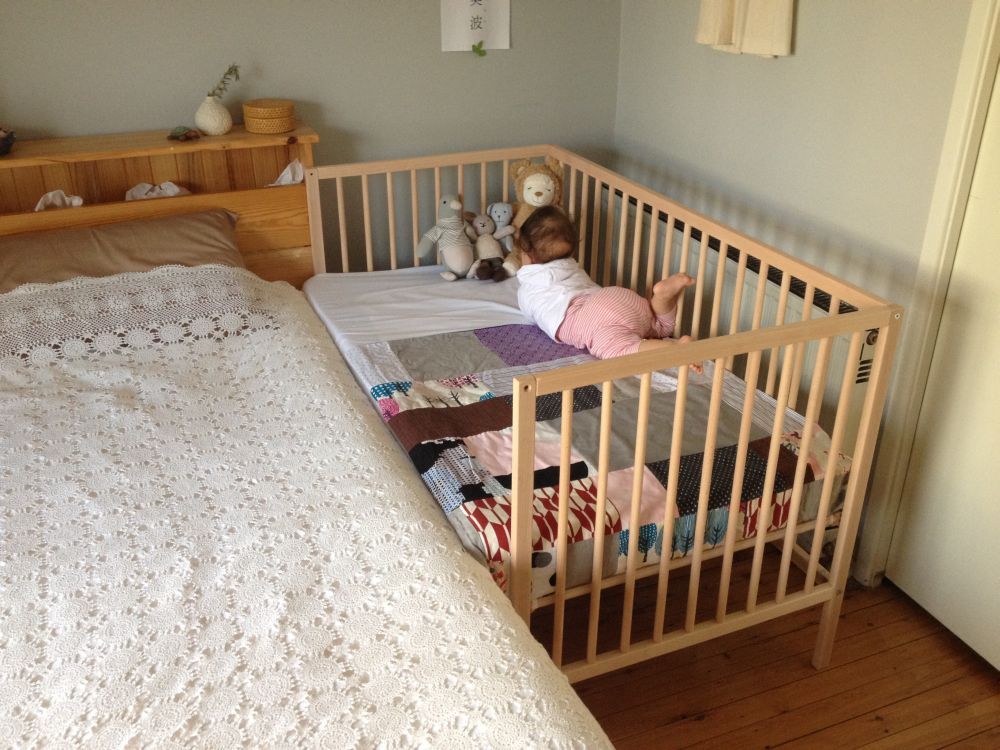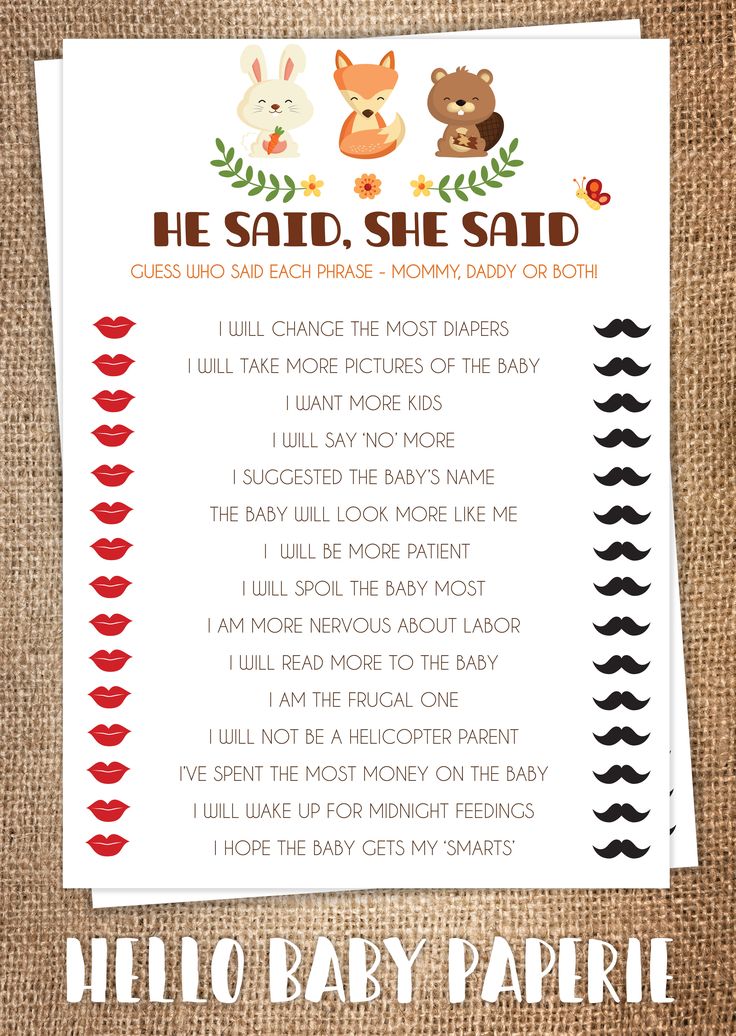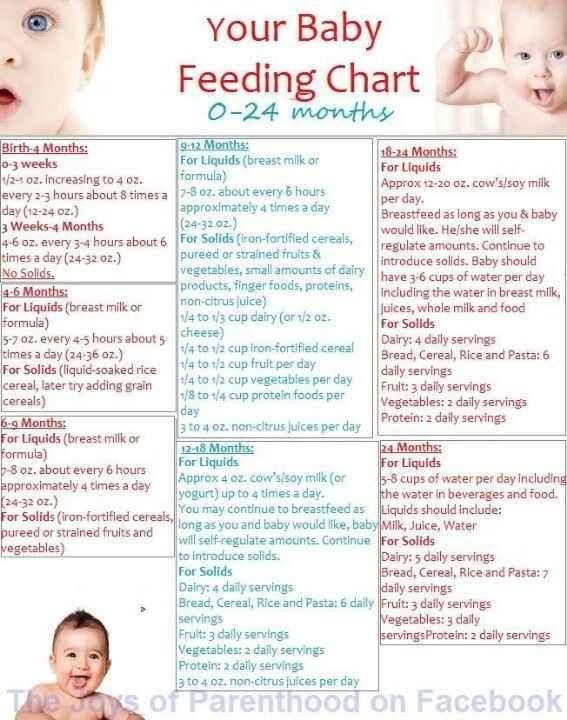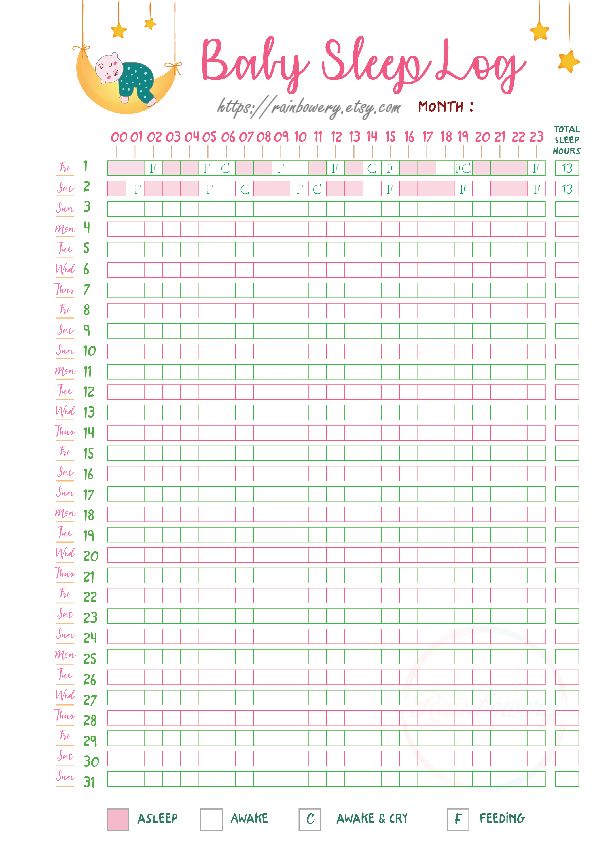Baby last feed before bed
Feeding Your Baby to Sleep - Is it a Good Idea?
Tags:
- Baby
- Newborn Sleep
- 3-6 Months Sleep
- 6-9 Months Sleep
- breastfeeding
- self-settling
This is one of those sleep topics that people often have a strong opinion on.....so we hope that you find our information on this topic helpful.
Our perspective is that if you are reading our sleep information, you are wanting to teach your baby to sleep through the night or at least reduce night-waking....so our tips are designed to achieve this objective!
Introduction
Feeding to sleep is one of the most common ways to get newborn babies to sleep. Tired babies will often fall asleep when feeding, as the combination of breast milk, cuddling with mum and sucking is very powerful. Plus, newborns can only cope with being awake for about an hour at a time, so if feeding takes a while, it becomes more and more likely baby will nod off while feeding.
With older babies, feeding to sleep can continue to be effective at getting your baby to fall asleep. However feeding to sleep quickly becomes a firm habit, as baby learns to fall asleep by feeding. Over time this means they will want to be fed back to sleep every time they wake in the night, which is on average 4-6 times for babies over 5 months.
Feeding your baby to sleep can be lovely for all ages; baby is snuggled in your arms, having a delicious cuddle, it's warm and comforting. It's great for bonding and lovely for both mum and baby.
'Feeding to sleep' in this article generally refers to breast-feeding to sleep but the information can equally be applied to babies who fall asleep while being bottle fed.
Should I feed my baby to sleep?
It's a very personal decision and you will know what is best for your baby. However, we encourage you to read the information below, so you understand the longer term impact of feeding your baby to sleep.
While it may seem like a quick and easy settling solution now, the majority of longer term night-waking that we deal with is caused by an entrenched habit of either feeding or rocking to sleep.
It's best to be well informed about feeding to sleep and make a decision about whether this is what you want to do, rather than feeling like you have to do it or it's the only option.
Feeding babies under 5 months to sleep
When babies are newborn, how they fall asleep often doesn't have too much impact on their sleep. You may be feeding to sleep and your baby is sleeping through the night, or having good day sleeps. This is because newborns drift in and out of sleep cycles, and haven't yet learned habits of how they get to sleep.
One impact of feeding a newborn to sleep can be catnapping. This is particularly true if you feed a baby to sleep, then transfer them to their bassinet. They may sense you are not there when they wake or miss the sound of your heart-beat, and will wake up shortly after being put down.
Plus you may also feel that you are feeding all the time or stuck to the sofa, as if you move your baby will wake up!
One option is to change your routine, so you use Feed, Play, Sleep. This means you feed your baby when she wakes, rather than right before she needs to sleep. Your baby will feed better as she is hungry and alert, rather than snacking and falling asleep.
There is no need to do a 'top up' feed before your baby gets into bed. If you observe tired signs, pop your baby into bed and use settling techniques such as white noise and swaddling to get her to sleep.
Be aware that baby sleep changes significantly at about 4-5 months. A baby who is fed to sleep and has been sleeping all night will likely start waking again after 4-5 months. If the feeding to sleep continues, many babies go back to waking 4-6 times or more every night, wanting the powerful breast milk/sucking/cuddle combo to get back to sleep.
The sooner you start to teach your baby to fall asleep without feeding, the easier it is likely to be!
Weaning newborns off being fed to sleep
-
For babies under 4 months, start by reviewing The Happiest Baby techniques of Swaddling, White Noise and Side/Stomach position etc.
 Often using these settling techniques will make enough difference that you can change with relative ease.
Often using these settling techniques will make enough difference that you can change with relative ease. -
Use the feed/play/sleep routine during the day, so you are settling baby when she is tired....and feeding baby when she wakes up.
Feeding babies over 5 months to sleep - continued night waking
If you are happy with frequent night waking, then of course it is fine to feed your baby to sleep. But if you are wanting to encourage your baby to sleep through the night and be able to settle without your help, then weaning your baby off being fed to sleep is essential.
This is because all babies over 5 months wake FULLY between sleep cycles (usually 4-6 times a night minimum) and to 'sleep through the night' they need to be able to resettle themselves after each sleep cycle. If they are feeding to sleep at bedtime, they will likely expect to be fed back to sleep at each night-waking too.
For babies over the age of 5 months, feeding to sleep is one of the most common reasons that babies wake in the night.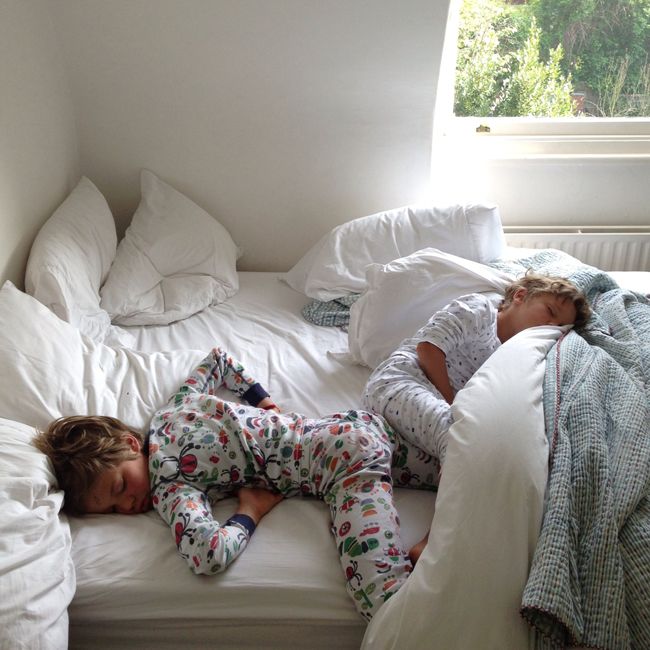 This is true for babies who were sleeping through and start waking again, and is the reason why many babies have never slept through.
This is true for babies who were sleeping through and start waking again, and is the reason why many babies have never slept through.
Generally, the longer a baby has been fed to sleep, the more often a baby will wake in the night...rather than less.
As we have said, if you are OK with this...no problem at all. But if you are becoming exhausted from repeatedly getting up to your infant and having to feed her back to sleep during the night, changing your bedtime settling technique will have a significant impact on baby's night-time sleep.
Read our information on sleep assosiations for more on this
Only mum will do
Another reason that many mums become frustrated with feeding to sleep is that it means only they can settle baby at bedtime. This can mean you feel tied to home and you can never go out in the evening. It can mean limited options for baby-sitting, especially if further feeding is required if baby wakes an hour or two later.
By teaching your baby another settling technique you may be able to enjoy the odd evening out with your partner or even a night away!
And it is great when Dad can settle baby to sleep at bedtime and during the night. It's great for his confidence with your baby and nice to spread the work-load of baby around a bit!!
Relying on feeding to sleep can put extra pressure on you as a breast-feeding mum...and we know it is the reason why many mums give up breastfeeding altogether. Once your baby is no longer fed to sleep, you may find you actually enjoy breastfeeding more as you may feel you regain a sense of control.
How to decide when to wean your baby off feeding to sleep
Regardless of the age of your baby, you can wean your baby off being fed to sleep relatively quickly and easily - when you are ready to do it!
Feeding to sleep becomes a very strong habit, for both mum and baby, and dad can rely on it pretty heavily too! So absolute commitment from both parents to teaching baby a new settling technique is essential if you are going to be successful.
While you have an end goal of teaching your baby to self settle, it's worth noting that this doesn't mean using 'cry it out'.....there are lots of options for teaching babies to settle without feeding to sleep. Choose one that you as a family are comfortable with. Different techniques work for different families, depending on the age of the baby, how quickly you need it to work, what you are prepared to try etc.
Also remember your consistency and commitment to your sleep plan will be the main thing which determines if your baby learns to settle without feeding to sleep, so only start when YOU are ready.
Recognise that teaching your baby a new settling technique takes days or weeks...do not expect your baby to like the change immediately or instantly sleep through the night after one day!
But you should start to see improvements after 4-5 days if you are being consistent with always using the new technique and not confusing your baby by feeding her back to sleep in the night.
Read our detailed article on teaching your baby to self settle
Should I feed baby to sleep at night?
Babies over 4-5 months generally do not need any feeds in the night if they are having a dreamfeed at about 10pm. Doing a feed with your baby ASLEEP means you fill her tummy without her knowing, and you go to bed knowing she is not hungry in the night. Alternatively you could feed for the first wake after 9pm.
If you are not sure if your baby can last without any additional feeds, you won't know till you try it! It is worth trying to settle your baby without a feed and see if she can go back to sleep with a some additional warm bedding (often babies wake COLD rather than hungry), cuddle, patting, dummy or another settling technique. Generally we offer a feed as the first option, rather than try some other things first and see if she will go back to sleep.
You can also check with your Plunket nurse if she is happy with your baby's weight gain.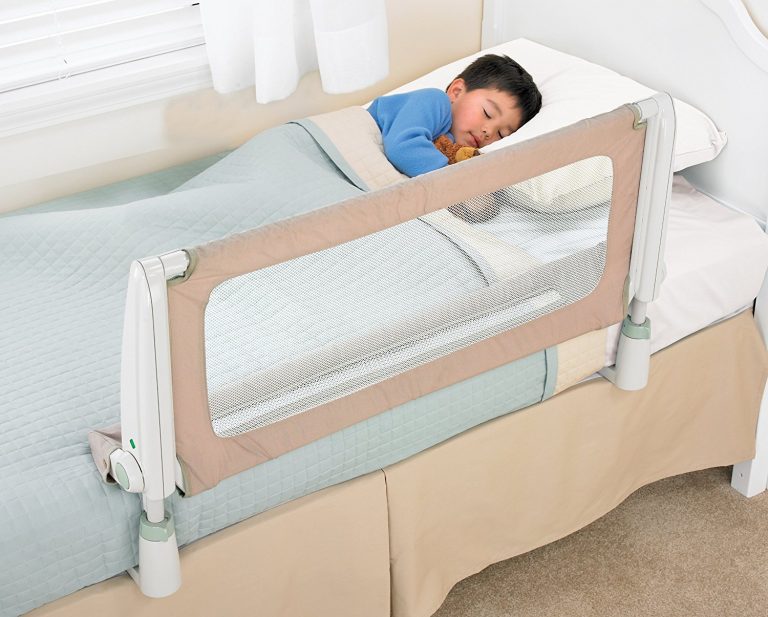 ..i.e. if your baby is not putting on enough weight, then you will need to continue with at least one night feed.
..i.e. if your baby is not putting on enough weight, then you will need to continue with at least one night feed.
However you will find that the quicker you drop all feeds other than a Dreamfeed, the quicker your baby will sleep independently through the night. Babies often do not drop night feeds without some gentle encouragement from mum!
The quicker you drop all feeds other than a dreamfeed, the quicker your baby will sleep independently through the night.
How to gently stop feeding your baby to sleep
-
Babies over 5 months generally do really well with a structured routine for daytime and bedtime, such as day sleeps at 9am, 1pm, 4.30pm and bedtime at 7pm. This also means you will feed your baby when she wakes during the day, rather than before sleep times.
-
Introduce some additional positive sleep associations and allow several days for your baby to become attached to them before you start teaching self settling.
 For example, start putting your baby into a sleeping bag before you feed her, give her a comforter to cuddle (for babies over 6 months of age) while you feed her and play white noise during the feed as she falls asleep...These associations are going to replace YOU as her main sleep association (i.e. what she needs to fall asleep).
For example, start putting your baby into a sleeping bag before you feed her, give her a comforter to cuddle (for babies over 6 months of age) while you feed her and play white noise during the feed as she falls asleep...These associations are going to replace YOU as her main sleep association (i.e. what she needs to fall asleep). -
Using a Safe T Sleep can give your baby a lovely feeling of pressure around her tummy, the same way your hand can or being cuddled. This is worth looking at as another tool in this weaning process.
-
Aim for 10 minutes of awake time between finishing your 6.30pm feed and when baby goes into bed. This can be cuddles, stories, a walk round the house, massage etc. You may want to gradually work up to 10 minutes if you currently feed baby until she is asleep. E.g. tonight aim for 30 seconds between feed and baby into bed, tomorrow night aim for a minute etc.
-
Your first step is to teach your baby she can actually fall asleep in bed, rather than on YOU - this is the most significant aspect of the weaning process.

-
So if you currently feed baby until she is asleep, change to only feeding baby until she is drowsy. Then put her into bed and then pat/sssh/put firm pressure on her tummy etc until she falls asleep IN BED.
-
Once your baby can fall asleep in bed OK, change to feeding until calm and use your patting to get baby get drowsy in bed.
-
Then you can work on increasing the awake time between the end of the feed and when you put your baby into bed awake.
-
Finally you will need to gradually reduce the amount of patting you do to help your baby get drowsy or fall asleep.
-
CONSISTENCY - Make sure you do the same for any night-waking! So if you are up to putting baby into bed drowsy but awake at bedtime, then do the same during the night.
-
If you have a really sucky baby, consider using a dummy for bedtime and during the night settling. Once babies are over about 5 months they can learn to put a dummy back in for themselves, which means you don't need to feed them back to sleep!
-
The No Cry Sleep Solution is a great resource if you want a very slow and gentle approach to weaning off feeding to sleep.
 The technique involves the 'Pantley Pull-off' where you un-latch your baby and gently close her mouth, repeatedly....as she learns she can get to sleep without sucking. It is a very involved process but will work if you are consistent and patient with it.
The technique involves the 'Pantley Pull-off' where you un-latch your baby and gently close her mouth, repeatedly....as she learns she can get to sleep without sucking. It is a very involved process but will work if you are consistent and patient with it.
It won't be as hard as you expect!!!
At this point you should reassure yourself that you can teach your baby to fall asleep without feeding, and it will not be nearly as hard as you imagine it will be.
This is absolutely the message we get from many mums every week - just decide on a plan and you will soon have a baby who loves to cuddle and feed, but doesn't rely on it to get to sleep at bedtime and through the night.
We Recommend These
MCGRAW HILL
Sold out
View Product
WOOLBABE
Sold out
View Product
Sold out
View Product
If you are suffering post-natal depression or are shattered.
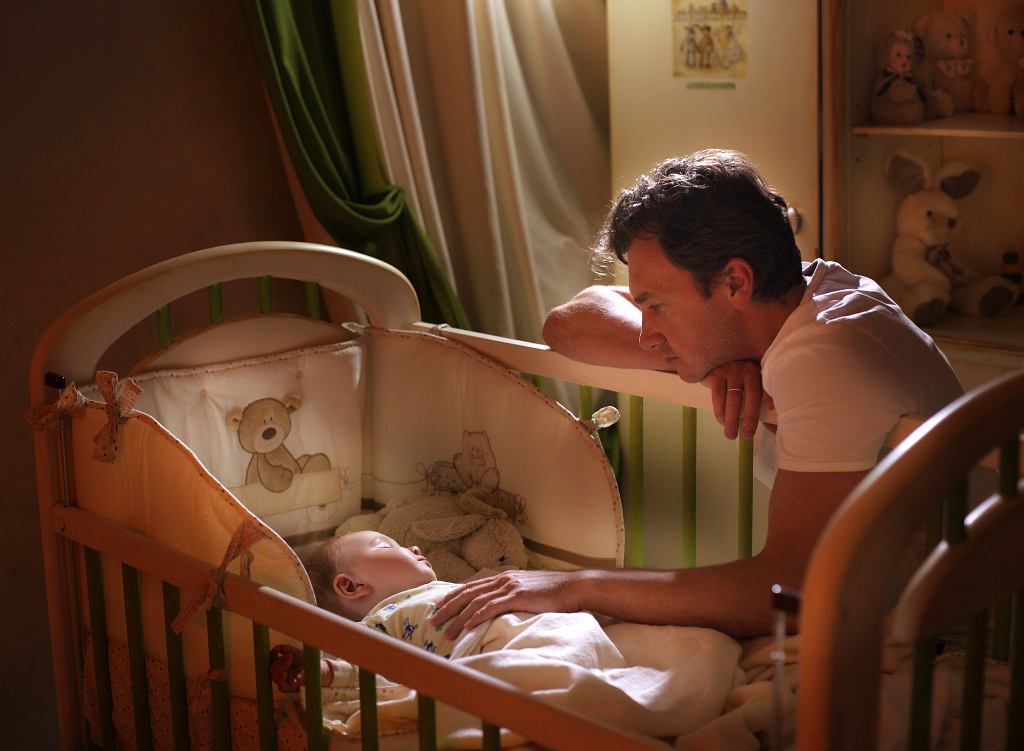 ..
.. Over 50% of post-natal depression can be resolved in a few days when the baby learns to sleep through the night, i.e. the link between maternal sleep deprivation and depression is very strong.
So if you are depressed or just feeling at the end of your tether, you might want to consider a faster approach to weaning them off being fed to sleep - there are no prizes for being a martyr, particularly if your own health and well-being is at stake!!
The verbal reassurance method will generally teach a baby to sleep independently in 3-4 nights - see our facebook discussion page for feedback from other mums on this technique or see the Sleepeasy Solution DVD.
Recommended Articles
Teaching your baby to self settle
Everyone talks about self settling...but why is it important? Why should you bother to teach your baby to settle himself at bedtime? Why not just continue feeding or rocking your baby to sleep?
Read MoreSleep Associations and Self Settling
Teaching your baby to self settle at bedtime can be one of the biggest challenges you will face with your baby's sleep. It is an essential step in your baby learning to sleep through the night.
It is an essential step in your baby learning to sleep through the night.
Introducing and using a comforter
A small blanket or soft toy specifically designed to be used for settling babies and providing comfort.
Read MoreFeeding Baby to Sleep | Baby Sleep Advice | The Sleep Store
Mother breastfeeding baby to sleep in a baby carrier
Tags:
- Baby
- Newborn Sleep
- 3-6 Months Sleep
- 6-9 Months Sleep
- breastfeeding
- self-settling
BACK TO SLEEP ADVICE
When to wean your baby off their bottle at night
Photo credit: iStock.com / Artfoliophoto
The bedtime bottle is often the last bottle to go. It can be a central part of your baby's bedtime routine, and a source of comfort as they fall asleep.
That can make it a tough habit to break – but you have plenty of time to make the transition. It's best to stop giving your baby bottles between ages 1 and 2. By a year old, your baby is getting their nutritional needs met with daytime meals and snacks, so they don't need the calories from breast milk or formula to get them through the night.
It's best to stop giving your baby bottles between ages 1 and 2. By a year old, your baby is getting their nutritional needs met with daytime meals and snacks, so they don't need the calories from breast milk or formula to get them through the night.
If you're breastfeeding, there's no need to wean your child completely yet. In fact, experts recommend breastfeeding for at least year – or as long as you and your baby want. But once your baby is a year old, they no longer need formula and you can start giving them cow's milk.
No matter what you're serving, it's smart to start transitioning from bottle to a sippy cup or straw cup around age 1. And it's recommended to have your child drinking out of regular open cups by the time they're 2 years old for their dental health.
If your baby was born premature or has other health considerations such as digestive problems or failure to thrive, they may need a bedtime bottle longer. Talk to your baby's healthcare provider before making changes to their feeding schedule.
Why to wean your baby off their bedtime bottle
If your baby is used to falling asleep while drinking from their bottle, or right after having a bottle, it may be difficult for them to fall asleep without one. It's best to teach your child how to soothe themself to sleep, rather than relying on a bottle at bedtime (more tips on that below).
The longer you wait to stop the bedtime bottle, the more ingrained it will become – and the more difficult it will be to get your child to fall asleep without it.
Another reason to discontinue the bottle is to protect your baby or toddler's teeth. If your child falls asleep while drinking from a bottle, they may have milk pooling in their mouth and around their teeth when they go to sleep, which can cause tooth decay.
This is the case even if your baby doesn't fall asleep while drinking from a bottle. If you put them to bed right after giving them a bottle, the milk may pool in their mouth and around their teeth. It's best for them to not have milk in their mouth when they fall asleep, especially once they have teeth. Remember to always brush your baby's teeth after giving them milk, and don't give your baby more milk after brushing.
Remember to always brush your baby's teeth after giving them milk, and don't give your baby more milk after brushing.
This is also a good time to introduce a sippy cup. Sippy cups that feel like a bottle (with a soft, flexible spout) can be a good tool for transitioning your baby from a bottle, but the best thing for your child's teeth is a regular open cup or straw cup.
Once your baby is drinking from a sippy cup, don't put them to bed with a sippy cup of milk or juice.
How to wean your baby off their nighttime bottle
Babies are good at self-regulating their feedings, so your baby may "tell" you when they're ready to drop that last bottle of the day by turning their head away or consistently not finishing it.
But if your baby isn't ready to quit the bedtime bottle on their own, it can seem like a daunting task – especially if it's central to your routine or something your child finds comfort in. You can still maintain much of your baby's routine without a bottle, and find other ways to comfort and soothe them before bed.
Here are some ways you can help the transition along:
- If your baby regularly falls asleep when they drink from their bottle, start by moving the bottle to the beginning of their bedtime routine so they can get used to falling asleep without it.
- Gradually reduce the amount of breast milk or formula in your baby's bedtime bottle. Give them one ounce less every night for a week or so, until there's only one ounce left in the bottle, then remove it from your bedtime routine.
- Keep all the other parts of your child's bedtime routine the same – taking a bath, putting on pajamas, reading a book, singing songs, snuggling, and so on.
- If you want to replace the bottle part of your child's bedtime routine with something else (like singing a lullaby), implement that with the bottle for a few days before cutting the bottle out. That way, they're already familiar with this new part of the routine when you stop giving the bottle.
- Offer your baby other comfort objects at night, like a favorite blanket or stuffed toy, once they're at least a year old.

- Give your child some extra snuggles and quality time before bed.
- Offer a cup of milk with dinner or with a before-bed snack instead of the bottle.
- Explain to your child that because they're getting so big and grown up, they don't need the bottle before bed anymore.
- On a similar note, give your child plenty of praise when they first start drinking out of a cup: "Wow – look at you drink with that cup! You're so big!" It can help to choose a cup that's their favorite color, or that's decorated with a favorite cartoon character or animal.
- Once you've cut the bottle out, be consistent. Don't go back and forth between offering the bottle or not. Be confident and optimistic about the change for your child.
Sources
BabyCenter's editorial team is committed to providing the most helpful and trustworthy pregnancy and parenting information in the world. When creating and updating content, we rely on credible sources: respected health organizations, professional groups of doctors and other experts, and published studies in peer-reviewed journals. We believe you should always know the source of the information you're seeing. Learn more about our editorial and medical review policies.
We believe you should always know the source of the information you're seeing. Learn more about our editorial and medical review policies.
American Academy of Pediatrics. 2015. How to Prevent Tooth Decay in Your Baby. https://www.healthychildren.org/English/ages-stages/baby/teething-tooth-care/Pages/How-to-Prevent-Tooth-Decay-in-Your-Baby.aspx [Accessed May 2022]
American Academy of Pediatrics. 2011. Discontinuing the Bottle. http://www.healthychildren.org/English/ages-stages/baby/feeding-nutrition/Pages/Discontinuing-the-Bottle.aspx [Accessed May 2022]
American Academy of Pediatrics. 2016. Failure to Thrive. http://www.healthychildren.org/English/health-issues/conditions/chronic/Pages/Failure-to-Thrive.aspx [Accessed May 2022]
American Academy of Pediatrics. 2021. Weaning your Baby. http://www.healthychildren.org/English/ages-stages/baby/breastfeeding/pages/Weaning-Your-Baby.aspx [Accessed May 2022]
American Dental Association. Undated. Training Cups and Your Toddler's Teeth. https://www.mouthhealthy.org/en/babies-and-kids/training-cups [Accessed May 2022]
https://www.mouthhealthy.org/en/babies-and-kids/training-cups [Accessed May 2022]
Nemours Foundation. 2018. Stopping the Bottle. https://kidshealth.org/Nemours/en/parents/no-bottles.html [Accessed May 2022]
Stremler, R. n.d. How do I get him to fall asleep without a bottle? Pediatric Sleep Council. https://www.babysleep.com/sleep-advice/how-do-i-get-him-to-fall-asleep-without-a-bottle/ [Accessed May 2022]
Kandis Lake
Kandis Lake is a registered nurse, health writer, and mom of three kids. She lives in Utah and loves reading and adventuring with her family.
Breastfeeding on demand
You can often hear from a nursing mother: "I feed on demand, my baby requires a breast every 3.5 hours." Or: “I have always fed on demand. In a year, we already had 1 feeding in the evening, and my child calmly refused to breastfeed. Before talking about the demand of the child, it is necessary to find out what modern women mean when they say - "I breastfeed.
"
Modern mothers consider breastfeeding necessary for feeding their baby. Just for feeding. Breast milk is food, the mother supplies the baby with the nutrients necessary for growth and development. When a baby suckles at the breast, he eats. Breastfeeding makes sense only as a process of supplying proteins, fats, carbohydrates, vitamins and microelements.
During suckling, the baby receives the nutrients it needs with mother's milk. This is the absolute truth. There is another unconditional truth, which is not given any importance in modern society, it is not taken into account and is not considered. Breastfeeding for a child is communication with the mother. We need to figure out how the child understands feeding on demand? Can he understand anything at all? Is there any difference for him how he is fed, for 15-20 minutes after 3.5 hours or in some other way?
What is on-demand feeding
On-demand feeding of a newborn baby means putting it to the breast for every squeak or search.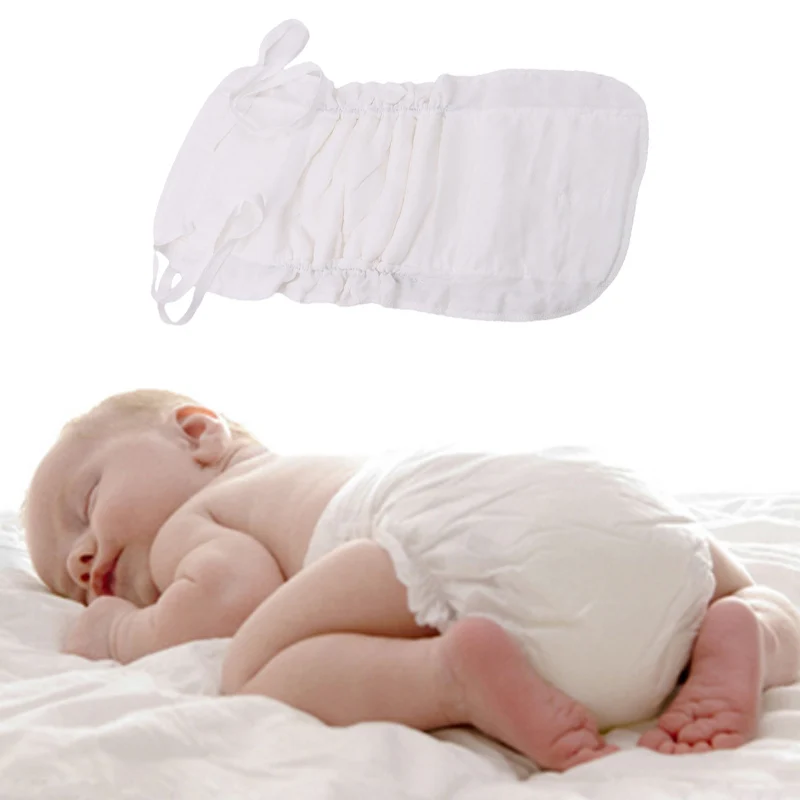 Squeak and search movements in newborns, even as early as the second or third day of life, begin to appear much more often than after 3.5 or 2.5 hours. The need for attachments increases rapidly, and by the 10-12th day of life, the need to attach to a child may occur 15-16 or more times a day. Applications vary in duration. The baby can fall asleep and sleep while sucking for, for example, 1.5-2 hours. Can release the breast after 1-2 minutes. And then ask her again. Why does a child need such frequent contact with his mother's breast?
Squeak and search movements in newborns, even as early as the second or third day of life, begin to appear much more often than after 3.5 or 2.5 hours. The need for attachments increases rapidly, and by the 10-12th day of life, the need to attach to a child may occur 15-16 or more times a day. Applications vary in duration. The baby can fall asleep and sleep while sucking for, for example, 1.5-2 hours. Can release the breast after 1-2 minutes. And then ask her again. Why does a child need such frequent contact with his mother's breast?
That's why. Being in the mother's belly, in a calm, familiar environment, listening to the noises of the mother's body, being in a warm, cramped, confined space, the baby sucked his fist, fingers, loops of the umbilical cord, swallowed amniotic fluid. Learned to suck and swallow. After birth, experiencing discomfort for any, the most insignificant reason, the baby tries to get rid of it. You can get rid of discomfort by getting into the usual conditions of a comfortable stay. The only place where the baby after birth can feel the sensations familiar to him is in the arms of the mother. The only familiar action is sucking. The only familiar taste and smell is the taste and smell of milk and lube in the areola. Milk and lubricant have an odor and taste similar to the taste and smell of amniotic fluid. Therefore, experiencing discomfort, the baby squeaks, or begins to look for an object to suck with his mouth. Ideally, it is immediately applied to the chest. The baby becomes warm, cramped, he hears the beating of his mother's heart, breathing, grumbling in the intestines, he sucks and feels the familiar taste and smell. If such an action happens constantly, the baby gains confidence, no matter what happens, he will solve all his problems with his mother. The place of comfort is now under the breast, and you can suck on the breast.
The only place where the baby after birth can feel the sensations familiar to him is in the arms of the mother. The only familiar action is sucking. The only familiar taste and smell is the taste and smell of milk and lube in the areola. Milk and lubricant have an odor and taste similar to the taste and smell of amniotic fluid. Therefore, experiencing discomfort, the baby squeaks, or begins to look for an object to suck with his mouth. Ideally, it is immediately applied to the chest. The baby becomes warm, cramped, he hears the beating of his mother's heart, breathing, grumbling in the intestines, he sucks and feels the familiar taste and smell. If such an action happens constantly, the baby gains confidence, no matter what happens, he will solve all his problems with his mother. The place of comfort is now under the breast, and you can suck on the breast.
This whole process is biologically justified. A newborn child does not feel the feeling of hunger, this feeling is not formed in him.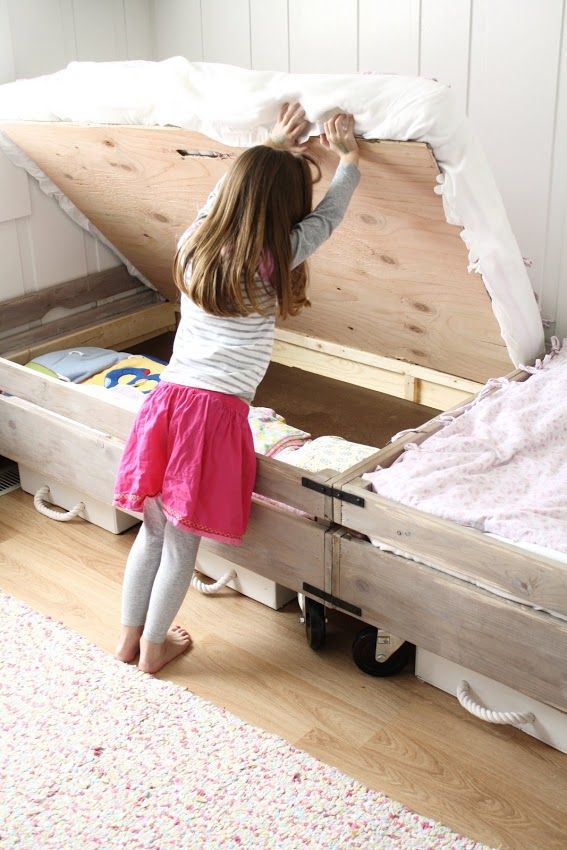 It will begin to form at about two months of age. How to feed a creature that does not experience hunger ?! How to encourage him to take some action to get food? This can be done only at the expense of some other incentives. This stimulus for the newborn is constant bodily discomfort, thanks to which he wants to suckle all the time! The most intense, frequent and prolonged sucking in infants is observed in the first two or three months of life. It is in these first months that the main weight gain of the baby occurs.
It will begin to form at about two months of age. How to feed a creature that does not experience hunger ?! How to encourage him to take some action to get food? This can be done only at the expense of some other incentives. This stimulus for the newborn is constant bodily discomfort, thanks to which he wants to suckle all the time! The most intense, frequent and prolonged sucking in infants is observed in the first two or three months of life. It is in these first months that the main weight gain of the baby occurs.
Feeding in the first month
Baby falls asleep with breast in mouth, sleeps sucking for a while. Falling asleep deeply, lets go of the chest. After sleeping for a while, he wakes up, and is applied on waking. After sleep, he can stay awake for some time, for example, an hour and a half. During wakefulness, he may feel discomfort 2-3 times, for example, from a completely natural desire to pee, and having called his mother for help, having kissed for a couple of minutes, he will do his deeds. Then he will want to sleep, feel discomfort and, kissing his chest, will again fall asleep sucking. After some time, he will wake up and attach again. Then again a little "walk". And after some time, he will fall asleep at the chest again.
Then he will want to sleep, feel discomfort and, kissing his chest, will again fall asleep sucking. After some time, he will wake up and attach again. Then again a little "walk". And after some time, he will fall asleep at the chest again.
The daytime naps of a one-month-old infant feeding on demand vary in duration and number. There can be 4-6 dreams during the day, and they can last from 5-15 minutes to 2-2.5 sometimes 3 hours. "Around" each dream, the baby is applied to the chest, and applied between dreams several times. At night, the child falls asleep at the breast. Usually in the early morning hours, he begins to fuss and apply. In the morning, he almost never fully wakes up. The baby sleeps, from time to time, sucking on his mother's breast. Waking up in the morning, the baby is again applied to the chest. If you count all the attachments that have happened in a baby of one month of age, then approximately 16-20 attachments are obtained. This is how a newborn human cub behaves if it is given the opportunity to behave in accordance with physiological and psychological needs, which, by the way, are genetically determined. The child of the first months of life does not separate his personality from the personality of the mother and from her breast. Mom and her breasts, and everything connected with them, are the universe of the baby and himself.
The child of the first months of life does not separate his personality from the personality of the mother and from her breast. Mom and her breasts, and everything connected with them, are the universe of the baby and himself.
In most cases, a modern woman, being afraid to “accustom a child to hands”, strives to limit his requests for sucking. A pacifier and a bottle of tea or water come to her aid in this matter. They, too, can be sucked ... The need for sucking seems to be satisfied. But only the need for communication with the mother during suckling is not satisfied, the peculiar chain of mutual assistance and cooperation between mother and baby is destroyed, the formation of maternal affection and concentration is disrupted. Is the difference in the two actions noticeable to the reader: the baby cried, the mother took him, put him to her chest and started rocking him, or gave him a pacifier and started rocking the stroller, even with the words “Why are you crying, my sun?”
The modern woman who gives a pacifier and pumps a stroller is not a bad person deliberately harming an infant. She is simply in captivity of prejudices regarding the relationship between mother and baby. She does not know how to behave correctly, does not know what to do in accordance with the natural needs of the child. If you tell her what the child really needs, she will exclaim in horror: “What is it, don’t let him get away with?!” Indeed, the child of the first months of life must not be let off the hook. For a woman who does not know how to comfortably carry a baby, and who does not know how to feed him in various positions (sitting, lying, standing and even moving), this can be very difficult. Especially if she is not sure of the correctness of her actions.
She is simply in captivity of prejudices regarding the relationship between mother and baby. She does not know how to behave correctly, does not know what to do in accordance with the natural needs of the child. If you tell her what the child really needs, she will exclaim in horror: “What is it, don’t let him get away with?!” Indeed, the child of the first months of life must not be let off the hook. For a woman who does not know how to comfortably carry a baby, and who does not know how to feed him in various positions (sitting, lying, standing and even moving), this can be very difficult. Especially if she is not sure of the correctness of her actions.
An action that should become automatic for the mother of a newborn: when the baby cries or shows other signs of anxiety, put the baby to the breast.
What's next?
The baby is growing. A fairly stable rhythm of daytime sleep begins to form in him, and a 3-4-month-old baby behaves quite differently from a newborn. Feeding on demand at this age looks something like this...
Feeding on demand at this age looks something like this...
- At three months, the baby has 10-12 feeds during the day and 2-4 at night. There are frequent applications for a short time, but their number is reduced. There may be a long night break in feedings, about 5 hours, but this is very rare. Much more often the night break is 2.5-3.5 hours. By this age, the baby's body is noticeably rounded.
- At four months, the baby begins to breastfeed noticeably less frequently. The main feedings are associated with sleep: the baby suckles before bedtime, during awakening and during sleep, both daytime and nighttime. In this regard, he has a fairly accurate feeding regimen. And many babies stop breastfeeding when they wake up after daytime sleep, sometimes as early as 2.5-3 months.
- At five months, the baby has 8-10 daytime feedings and 2-3 nighttime, attachments as well as in the fourth month of life, are organized around dreams - the baby eats when going to bed and some babies suck during awakening.
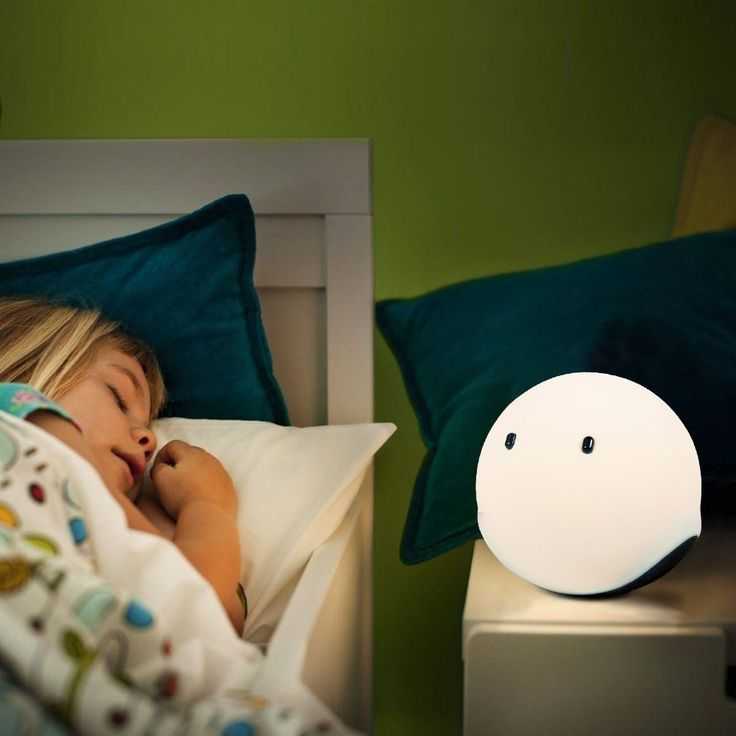
- At six months, the feeding regimen changes. The most active sucking shifts to the last 2-3 hours before waking up from a night's sleep. The period of daytime wakefulness can be divided into two periods: in the morning, when the baby sucked during the night is rarely applied to the breast, and in the evening, when attachments become very frequent. In total, there can be 7-10 day applications and 3-4 night applications. At this age, the baby begins a period of acquaintance with new food - pedagogical complementary foods. Sometimes there are attachments associated with the introduction of complementary foods, the baby “washes down” samples of new food with mother's milk. But many children do not want to drink complementary foods. When complementary foods are introduced to an on-demand baby, it is never meant to replace feedings with complementary foods. This is practically impossible, because the main feedings of the baby are associated with sleep, and mother's breakfasts, lunches and dinners, during which the baby gets acquainted with new food, are located between the baby's dreams, during his wakefulness.

- At seven months, the frequency of application is about the same.
- At eight months, the feeding regimen changes. Since the baby shows high motor activity and is very busy exploring the surrounding space, in the daytime he forgets to breastfeed. In this regard, the number of daily feedings can be reduced to 6-8 times. The baby compensates for the reduction in daytime feedings by increasing the frequency and duration of nighttime feedings up to 6 times.
- In the second half of the year, babies who stopped breastfeeding when waking up after daytime naps recall this habit again. The baby’s daytime sleep in the second half of life, as well as in the region of a year and older, looks something like this: the baby falls asleep sucking, sleeps quietly for a while, for example 1-1.5 hours, then starts tossing and turning, fiddling, worrying, at this moment the mother lies down next to , gives him a breast and the baby can fill up 10-15-30 minutes sucking. Mom may well use this time for her own rest - lie down, read, while the baby sleeps while sucking.
 I know my mother, a lover of embroidery, who used this time specifically for embroidery ...
I know my mother, a lover of embroidery, who used this time specifically for embroidery ... - Breastfeeding becomes more frequent at nine to ten months. In the daytime, this is 4-6 full feedings and about the same number of attachments for various reasons. The baby has new reasons for attachment. If, during active actions to master the world, the baby fills a bump or gets scared, he calms down with his mother's breast. There may be situations when you can comfort the baby by sitting next to him and hugging him. At night, 4-6 feedings remain, the baby begins to suckle more actively in the morning between 3 and 8 hours.
- At eleven months, a baby can already have 2-3 complete complementary foods. Initiation to adult food in the mind of a child is not associated with breastfeeding: attachment to the mother's breast is something other than the desire to get enough of the product they like. As a rule, after the baby has eaten, he feels the need to attach himself to the breast.
 The number of daily feedings remains the same in the child, but the number of short-term attachments increases. There are active mid-morning feedings between 4 and 8 o'clock in the morning.
The number of daily feedings remains the same in the child, but the number of short-term attachments increases. There are active mid-morning feedings between 4 and 8 o'clock in the morning. - At ten or twelve months, the baby, if he is already walking, can sometimes breastfeed every time he comes to his mother, i.e. about every 15-30 minutes. Attachments around dreams and night sucking persist. Therefore, if a mother says that a child suckles once or twice a day, this means that there is no feeding at the request of the child. There are restrictions imposed by the mother, with which the baby has come to terms. He treats breast sucking like food, sucks on a pacifier or a finger to fall asleep or soothe, or falls asleep just like that, without calming down.
- At twelve months, the baby is applied in about the same way.
- At the age of one and a half years, there may already be one daytime nap, so there are fewer attachments associated with sleep. Preserved for morning sucking.
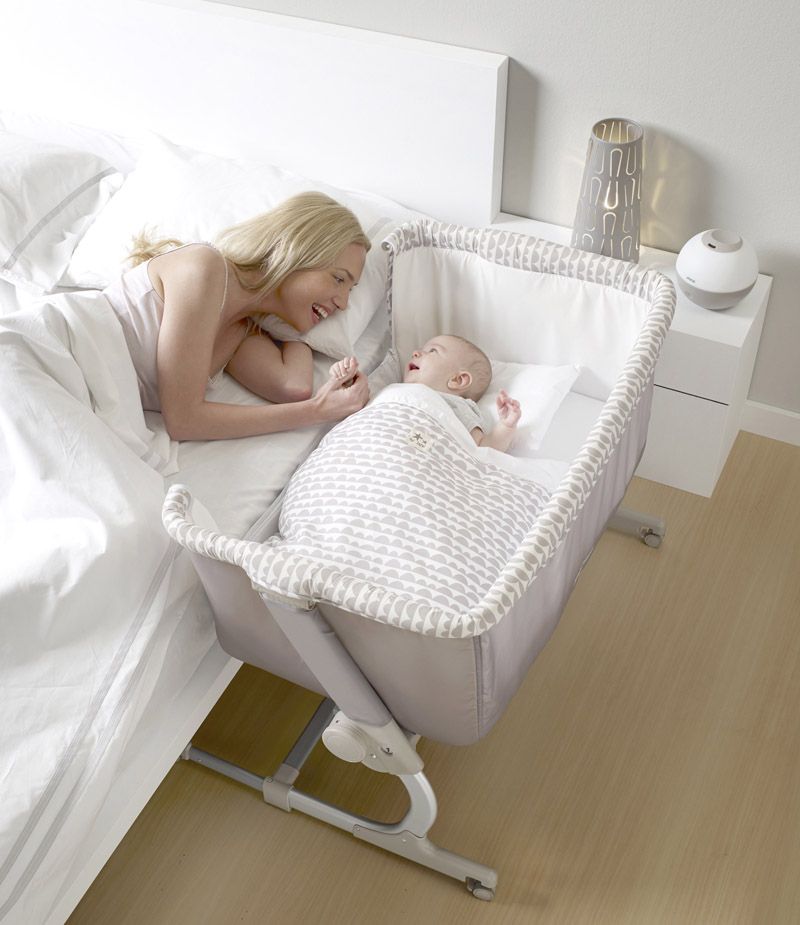 The baby is very free with his mother's breasts. Sometimes it happens that he comes up to suck just for fun. For example, like this: he comes up, climbs on his knees, looks into his mother’s face, smiles, starts to swarm in his shirt, gets breasts, smiles at his breasts, sucks for 30 seconds and leaves.
The baby is very free with his mother's breasts. Sometimes it happens that he comes up to suck just for fun. For example, like this: he comes up, climbs on his knees, looks into his mother’s face, smiles, starts to swarm in his shirt, gets breasts, smiles at his breasts, sucks for 30 seconds and leaves.
As for the number of feedings per day when feeding a child on demand, their number is almost never less than 12. A newborn has 12 or more attachments, mostly they are all associated with dreams. And a child, say 1.5-2 years old, can also have about 12 attachments, only 3-4 are associated with sleep, and the rest are short-term attachments for various reasons. I suggest to all mothers reading this text - do not count the application, do not notice their duration. Breastfeed your baby as often as he asks, when you feel the need to.
Moms who don't think about breastfeeding without looking at the clock may get the impression that when breastfeeding on demand, the mother can do nothing but feed the baby. This is not true. After the birth of a baby, a mother begins another life, she is called life with a baby. That's all. The child is with the mother, not the mother with the child! Feel the difference! You need to be able to organize your life in a different way, in the first months, of course, the help of loved ones is very necessary. In the tradition of many peoples, it was customary for the first 40 days after childbirth to remove a woman from any housework and household chores, she was engaged only in a child. In some nations, objects that the mother of a newborn touched were considered “unclean”, therefore, they preferred to protect the mother from the rest of the household, allocating her a separate “corner” of the house, where no one bothered her and she did not interfere with anyone. Among the Slavs, such a restrictive custom was called a six-week. By 1.5-2 months, the rhythm of daytime dreams begins to form, and the baby has a kind of “regime”, the mother becomes more free.
This is not true. After the birth of a baby, a mother begins another life, she is called life with a baby. That's all. The child is with the mother, not the mother with the child! Feel the difference! You need to be able to organize your life in a different way, in the first months, of course, the help of loved ones is very necessary. In the tradition of many peoples, it was customary for the first 40 days after childbirth to remove a woman from any housework and household chores, she was engaged only in a child. In some nations, objects that the mother of a newborn touched were considered “unclean”, therefore, they preferred to protect the mother from the rest of the household, allocating her a separate “corner” of the house, where no one bothered her and she did not interfere with anyone. Among the Slavs, such a restrictive custom was called a six-week. By 1.5-2 months, the rhythm of daytime dreams begins to form, and the baby has a kind of “regime”, the mother becomes more free.
For a mother who can't imagine breastfeeding without looking back at the clock, and who is sure that the “right” baby is the baby lying quietly in her crib all the time, feeding on demand will be a complete hassle. It will be much easier for such a mother if she stops looking at the clock and ties the baby to herself with a large scarf or uses a patchwork holder (sling). It will become easier for her if she stops running between the nursery and the kitchen, but takes the baby with her to the kitchen and carries him around the house with her, doing housework, in a box, a cradle, a special chair, if she tries not to put him off often, and pick up as soon as possible, postponing the baby only in case of emergency and not for long.
It will be much easier for such a mother if she stops looking at the clock and ties the baby to herself with a large scarf or uses a patchwork holder (sling). It will become easier for her if she stops running between the nursery and the kitchen, but takes the baby with her to the kitchen and carries him around the house with her, doing housework, in a box, a cradle, a special chair, if she tries not to put him off often, and pick up as soon as possible, postponing the baby only in case of emergency and not for long.
Breastfeeding is not the same as house arrest. In the conditions of modern society, it is possible to organize the exit of a nursing mother to work from about 6 months of age of the baby. If necessary, you can start working from the age of 4 months, but, of course, it is better not every day of the week and not full time. It is the responsibility of a breastfeeding consultant to help a mother organize her return to work.
Sometimes, when I advise mothers on breastfeeding, I suggest that they forget for a second that they are already living in the 21st century.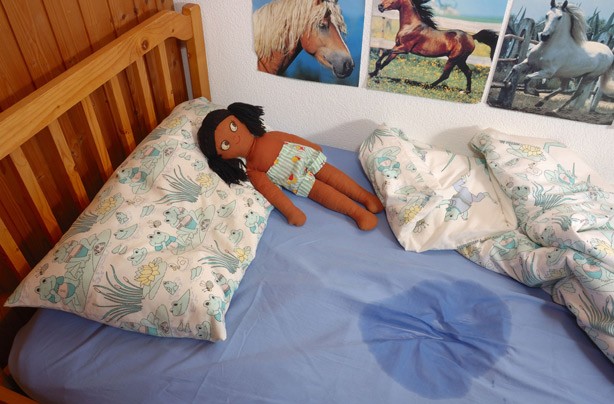 I propose to return, for example, to the cave and ask what they will do if the child woke up at night, how to calm him down? If you are walking through the forest and trying not to attract the attention of predators, how to make the baby silent? If the child is thirsty, what will you give him? What is the baby used to, for thousands of years of its existence? To the fact that he sleeps on his mother while she wanders through the forest with a digging stick in search of roots, and wakes up when mother stops. Since mom stopped, then there is time to wake up and suck. Therefore, even now the child sleeps well, tied to the mother with a patchwork holder, wakes up when the mother, having done a few household chores, sits in a chair to take care of the baby.
I propose to return, for example, to the cave and ask what they will do if the child woke up at night, how to calm him down? If you are walking through the forest and trying not to attract the attention of predators, how to make the baby silent? If the child is thirsty, what will you give him? What is the baby used to, for thousands of years of its existence? To the fact that he sleeps on his mother while she wanders through the forest with a digging stick in search of roots, and wakes up when mother stops. Since mom stopped, then there is time to wake up and suck. Therefore, even now the child sleeps well, tied to the mother with a patchwork holder, wakes up when the mother, having done a few household chores, sits in a chair to take care of the baby.
Some mother, reading about the cave, will be offended, saying that she is a civilized creature. But please think. Man, mother's breast and mother's milk have been created by evolution over millions of years. They are made for each other.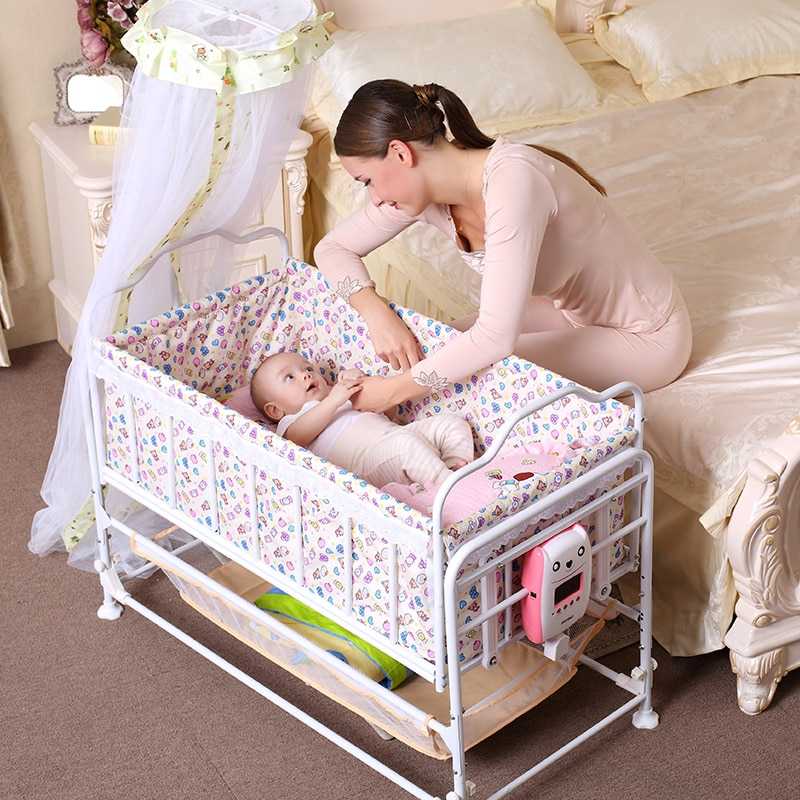 Baby food has created progress and more recently. The skills of motherhood and breastfeeding have also been lost by our society quite recently. A person is not physiologically adapted to artificial feeding and a pacifier. The mother's breast will not produce enough milk at 6-7 feedings per day. Nature did not know, when creating man as a mammal, that the time would come when the need for breastfeeding would be satisfied by some kind of pacifiers and nipples.
Baby food has created progress and more recently. The skills of motherhood and breastfeeding have also been lost by our society quite recently. A person is not physiologically adapted to artificial feeding and a pacifier. The mother's breast will not produce enough milk at 6-7 feedings per day. Nature did not know, when creating man as a mammal, that the time would come when the need for breastfeeding would be satisfied by some kind of pacifiers and nipples.
Changes that occur during the formation of the personality of a child who did not have full contact with the mother during prolonged breastfeeding are noted by modern research by psychologists and sociologists. These are changes with a minus sign. It would be better if they were not, these changes.
Breastfeeding is important not only for the baby, it is also important for the mother. During on-demand feeding, the woman's feelings change, a stronger attachment to the baby is formed, the woman becomes more sensitive to the needs of the baby.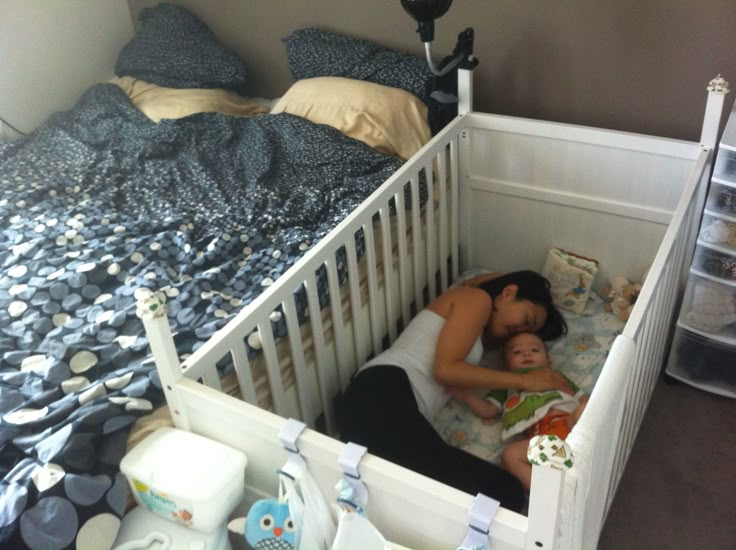 Deeper affection and understanding are not only preserved in infancy. They persist for life. For clarity, imagine what happens to a woman’s feelings if she tries to “withstand” a child, endures his crying, anxiety. What happens to a woman if she uses the recommendation from one very popular parenting book: "Go to the child if he cries for more than 15 minutes"? Speaking in abstract terms, humanity is interested in reviving the practice of breastfeeding. The revival of this practice is impossible without mothers realizing the true reasons for the child's need for attachment to the breast.
Deeper affection and understanding are not only preserved in infancy. They persist for life. For clarity, imagine what happens to a woman’s feelings if she tries to “withstand” a child, endures his crying, anxiety. What happens to a woman if she uses the recommendation from one very popular parenting book: "Go to the child if he cries for more than 15 minutes"? Speaking in abstract terms, humanity is interested in reviving the practice of breastfeeding. The revival of this practice is impossible without mothers realizing the true reasons for the child's need for attachment to the breast.
Lilia Kazakova, pediatrician,
Head of Breastfeeding and Child Care Counselors
How to wake up a baby for feeding and whether to wake up in the afternoon
05/29/2020
95
For any parent, the question of whether to wake up a baby is not easy. On the one hand, there are fears that a child who has been sleeping for a long time will not be able to fall asleep in time later, and on the other hand, how to raise such an angel, who was laid down for so long. ..
..
Let's discuss situations where it is important to wake up a child and how to do this so that his sleep is not affected.
Let's start with the smallest children. You've probably heard the phrase "never wake a sleeping baby." But it is not always fair. Some newborn babies wake up on their own for feedings, while others need to be awakened. Whether or not you need to wake your baby depends on their age, weight, and overall health.
The American Academy of Pediatrics recommends waking your baby for feedings if he sleeps more than 4 hours in the first two weeks of life. On average, a baby needs feeding every 2-3 hours.
Frequent feeding is very important for several reasons:
- The baby's stomach is very small, the baby quickly digests breast milk. Faster than a mix. Therefore, physiologically, the child necessarily needs frequent feedings every 2-3 hours.
- Babies can sometimes sleep even when hungry, thus malnourished, which affects their development.

- After birth, the baby loses 5-10% of its body weight. And in the first weeks he needs to gain weight. Lack of milk or formula slows down this process.
- A short interval between feedings helps to maintain lactation. That allows you to avoid problems with a shortage of milk in the future.
Tears already signal strong hunger. Therefore, it is better to breastfeed the baby before the baby starts crying. Learn to recognize the early signs of hunger: the baby puts his hand in his mouth, smacks his lips, tossing and turning when he sleeps.
Do I need to wake my baby up for feeding during the day? In general, if an infant sleeps for more than 3 hours in one dream during daylight hours, he must be awakened. Then the mother can feed the already awakened baby. This makes it possible to adjust the work of the biological rhythms of the baby.
How to Wake Up
- Help your child gradually fall asleep by stroking their arms, legs or lightly tickling them.

- Change diaper. Often this is enough for the baby to wake up and be ready to eat.
- Undress and place skin to skin on your chest. You can squeeze a few drops of milk onto your baby's mouth. He will smell and taste it and begin to suck on the breast.
- Speak - he will hear your voice and wake up.
- Do not turn on bright lights. A dim light is sufficient. The bright light will blind your eyes.
- If the baby has attached to the breast but has not begun to suckle, stroke his cheek.
How long to feed
As soon as the baby wakes up and starts to feed, make sure that the feed is long enough to empty at least one breast. So we will know that he ate hind milk, which is necessary for the growth of the child's body. Some babies take 45 minutes or more to feed one breast, and some do it in 10 minutes.
The sucking reflex promotes falling asleep. Therefore, make sure that the baby does not fall asleep while feeding. If he falls asleep, change position, lift him up to burp, and then start feeding again.
If he falls asleep, change position, lift him up to burp, and then start feeding again.
By 6 months you will have a more or less predictable eating schedule. But each baby will have his own. Some of the children eat every 2 hours, and someone is able to stay without food for 3-4 hours by the second month of life. This is especially true for children who are formula fed.
The time intervals between feedings increase as the child grows older. By the age of six months, many babies can already go without supplements at night or are able to sleep for longer periods.
If a baby wakes up too often after 6 months and asks for food in the dark, perhaps this is no longer hunger, but a way to relax and fall asleep.
Avoid using a pacifier in the first weeks after delivery. The pacifier helps the child to calm down and prolong sleep. So you may not notice that your baby is hungry. Therefore, start using a pacifier no earlier than 4-6 weeks and when you are lactating.
Should the baby be woken up to feed formula? As with breastfeeding, the newborn needs frequent formula feeding. But the interval will be more than 3-4 hours.
When it is necessary to wake up the child
It is important to wake up the baby in the morning if he fell asleep later than 7.00. This is especially true for children who still sleep 1-2-3 times during the day and have already developed a relatively stable routine. So you create the perfect routine in the morning.
After waking up, children need time to work up their fatigue for the next nap, the ideal window for which is around 9and 13 hours (depending on age).
Therefore, if the baby slept until 8 am, he simply will not be able to fall asleep in his first daytime sleep.
In order for the baby to wake up calmly without tears, you can enter a wake-up ritual. It allows the child to smoothly transition from a sleepy state to wakefulness.
Example of a wake-up ritual:
- Opening curtains/lights on
- Welcome words and a kiss
- Snacks, nursery rhymes after sleep
- Cheerful song
Then you can get up and start breakfast. For older children, such a ritual is also necessary.
For older children, such a ritual is also necessary.
The awakening ritual has different tasks:
- Marks the end of sleep,
- Teaches a child that everyday sounds are not a reason to wake up,
- Helps prevent baby from crying when waking up.
It will also be useful to have a light alarm. If the baby wakes up early, he will stay in bed until he sees the light on the clock.
When to wake up a baby after a nap
Many babies from 4 to 8 months sleep three times a day.
In this mode, it is important to wake up the baby after the third nap no later than 17.00. The duration of this segment is about 45 minutes, but not more than an hour. Then you can easily put the baby to bed by 19 o'clock.
Transition to one nap
At the age of 15-18 months there is a transition to one nap. It can be long and take place in different ways.
For example:
In the morning, the baby falls asleep easily and sleeps up to 2 hours. But then it is difficult to put it in lunch. And by the evening without rest at lunchtime, he is already overworked and falls asleep with difficulty.
But then it is difficult to put it in lunch. And by the evening without rest at lunchtime, he is already overworked and falls asleep with difficulty.
Therefore, if this is your case, you can pick up the child after 60-75 minutes. At the same time, move the start of the second sleep 15 minutes later. But if the baby sleeps for 1 hour in the morning and then it’s already difficult to fall asleep a second time, start putting him down only at lunchtime.
One nap after 2 years
Between 2.5-5 years, daytime sleep may disappear. Here again, the story described above is often repeated. It seems that the child falls asleep perfectly during the day, sleeps for a long time, but in the evening, laying down is delayed until 10-11 pm. The problem is that getting up early in the morning to the garden usually does not allow you to sleep the necessary 10-11 hours per night. And again, you will have to gradually limit the duration of daytime rest. Wake your baby up after 60 minutes first, then skip the daytime so your baby sleeps better at night.